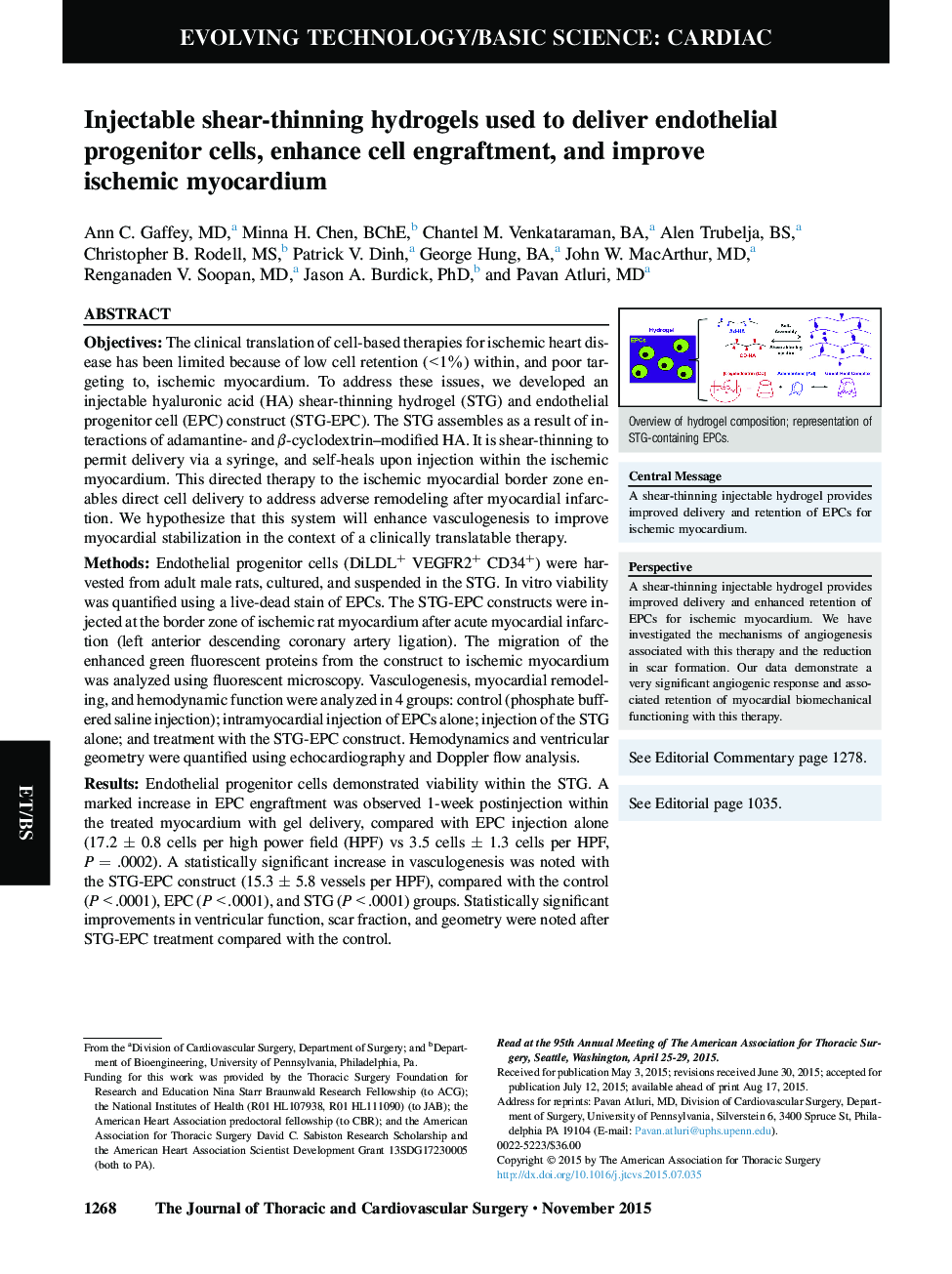| Article ID | Journal | Published Year | Pages | File Type |
|---|---|---|---|---|
| 2979277 | The Journal of Thoracic and Cardiovascular Surgery | 2015 | 10 Pages |
ObjectivesThe clinical translation of cell-based therapies for ischemic heart disease has been limited because of low cell retention (<1%) within, and poor targeting to, ischemic myocardium. To address these issues, we developed an injectable hyaluronic acid (HA) shear-thinning hydrogel (STG) and endothelial progenitor cell (EPC) construct (STG-EPC). The STG assembles as a result of interactions of adamantine- and β-cyclodextrin–modified HA. It is shear-thinning to permit delivery via a syringe, and self-heals upon injection within the ischemic myocardium. This directed therapy to the ischemic myocardial border zone enables direct cell delivery to address adverse remodeling after myocardial infarction. We hypothesize that this system will enhance vasculogenesis to improve myocardial stabilization in the context of a clinically translatable therapy.MethodsEndothelial progenitor cells (DiLDL+ VEGFR2+ CD34+) were harvested from adult male rats, cultured, and suspended in the STG. In vitro viability was quantified using a live-dead stain of EPCs. The STG-EPC constructs were injected at the border zone of ischemic rat myocardium after acute myocardial infarction (left anterior descending coronary artery ligation). The migration of the enhanced green fluorescent proteins from the construct to ischemic myocardium was analyzed using fluorescent microscopy. Vasculogenesis, myocardial remodeling, and hemodynamic function were analyzed in 4 groups: control (phosphate buffered saline injection); intramyocardial injection of EPCs alone; injection of the STG alone; and treatment with the STG-EPC construct. Hemodynamics and ventricular geometry were quantified using echocardiography and Doppler flow analysis.ResultsEndothelial progenitor cells demonstrated viability within the STG. A marked increase in EPC engraftment was observed 1-week postinjection within the treated myocardium with gel delivery, compared with EPC injection alone (17.2 ± 0.8 cells per high power field (HPF) vs 3.5 cells ± 1.3 cells per HPF, P = .0002). A statistically significant increase in vasculogenesis was noted with the STG-EPC construct (15.3 ± 5.8 vessels per HPF), compared with the control (P < .0001), EPC (P < .0001), and STG (P < .0001) groups. Statistically significant improvements in ventricular function, scar fraction, and geometry were noted after STG-EPC treatment compared with the control.ConclusionsA novel injectable shear-thinning HA hydrogel seeded with EPCs enhanced cell retention and vasculogenesis after delivery to ischemic myocardium. This therapy limited adverse myocardial remodeling while preserving contractility.
